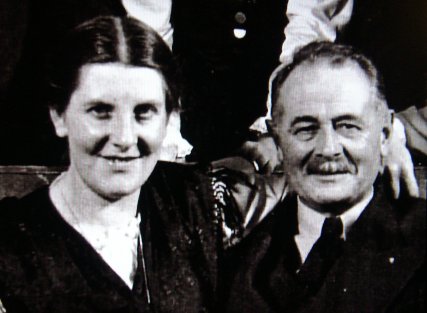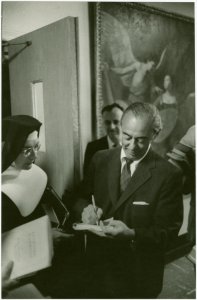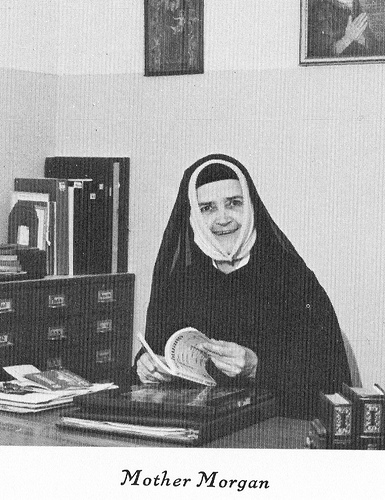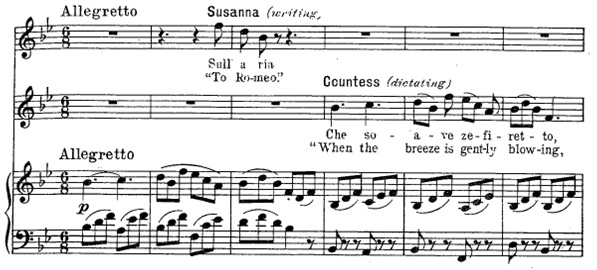Three summers with Central City Opera, eighteen Broadway
credits, and thirty-two wigs in The Sound of Music. When asked how many hairs it takes to ventilate a single wig,
consummate Wig and Makeup Designer Dave Bova wisecracked, “Oh God I don’t know.
As many hairs as on the human head…thousands or more.”
Bova has established himself as one of the business’ most
sought-after designers – the business of course including straight theatre,
musicals, and opera in professional and educational environments alike. Bova
often finds himself juggling eight to ten projects simultaneously with each
show opening within a three-month period, and somehow he manages it without
coughing up any hairballs. “I have an assistant who’s better than me,” Bova humbly
explained.
 |
| Dave Bova's headshot, courtesy of his webpage. |
In his nearly twenty-year career, Bova has seen wig designs
evolve just as theatrical aesthetics too have shifted. “The scale of the hair
style would be different. Opera houses are bigger so the hair would be too. That’s
not true anymore; in the last two decades opera has taken a more realistic turn
mostly because people want to see a movie on stage,” he said. “Wigs aren’t
supposed to look wiggy now.”
Nowadays, designers like Bova neither attempt to make
unbelievable wigs nor do they necessarily strive for historical accuracy. “If
you want to see period-correct, go to a museum,” Bova bluntly stated. “When
you’re designing, whether it’s set, costume, or hair, it’s not about
period-correct. It’s about what the audience will perceive is real for that
show.” Styles that were in vogue decades or centuries ago may look
anachronistic on stage even if presented truthfully. Thus a crafty wig designer
must sculpt not only what unifies the show’s composition but also what looks reminiscent
of how changing audiences will understand the given period.
Bova put this in perspective for The Sound of Music, his final show for Central City Opera’s 2014 Festival. “Maria’s wig for her wedding is pushing forward in time. The original
Maria had her hair pulled back in a bun, but that’s not very glamorous for the
stage,” he shared. He also added that in his research images, “every one of the
von Trapp kids were brunettes,” but for Americans to realistically perceive the
characters as full-blood Austrians it helps to style them as mostly blondish.
 |
| Troy Cook as Captain von Trapp and Kate Maley as Maria, sporting one of Bova's wigs, in The Sound of Music. Photo by Mark Kiryluk. |
And just in case there was any doubt about why historicism may
not be so practical in today’s theatre, Bova recalled our ancestors' less than
ideal hygienic habits. “Georgian women would wash their hair every three
months. We hardly use the real versions because people today wouldn’t find it
as pretty,” he said.
It’s not just the type of theatre or the show’s setting that
influences a wig’s style – it’s also the genre. “The biggest difference is if
it’s a comedy or a drama or a tragedy; that will really determine look,” Bova
described. The former genre may be more prone to exaggerated and
larger-than-life wigs while the latter two might more often be rooted in
realism.
Bova also shared his experiences working in juxtaposed
theatrical settings. “In commercial theatre, if you screw up the show closes.
In educational theatre the goal is to have a good experience – it’s not about
the end product, it’s about the student learning,” he shared. “I like them all.
When I get sick of one I do the other so it refreshes me. It’s a good balance.”
Central City Opera uniquely blends these contrasting settings:
the shows are produced by opera’s finest, but Bova also gets to oversee and
teach a handful of assistants and interns each summer.
 |
| With the help of a patron, Bova demonstrates putting on a beard backstage at the Opera House during this year's Opera Inside-Out. Photo by Erin Joy Swank. |
Regardless of the venue, Bova did agree on one key
ingredient for any design process’ success. “Everyone has to make a strong
choice, even if you don’t agree with it,” Bova said. “And then everyone must
compromise so that we can all have a collaborative effort. That’s theatre.”
With such a specific niche as makeup and wig design, Bova often has to defend
his choices by the only way a designer most effectively can – through show and
tell. If a director wants to put a honey-blonde wig on an actor with jet-black
hair, “I prepare for what they want even if I disagree. I make two wigs – what
they want and what I think works best – and put both of them up there, and 90%
of the time I win. You must trust your instincts.” Bova also makes sure that
the wig aligns with the costume and especially lighting designs as a colored gel can
easily manipulate what a wig looks like under working stage lights. All of
this, of course, reinforces Bova’s mantra that theatre is a collaborative art.
“If you don’t like that process then go paint a painting,”
said the lovably salty Bova.
It mustn’t be forgotten that Bova also doubles as a makeup
designer. While this process similarly entails research images and
communication with the director and other designers, its execution is
undeniably less time-consuming than creating a wig or even a mustache from
scratch. Bova elegantly summed up his technique in a likewise brief way:
“Makeup isn’t about changing your skin tone; it’s about flavoring it.”
 |
| Last year Bova designed The Barber of Seville for Central City Opera's 2013 Festival. Photo by Mark Kiryluk. |
With so many tasks to complete, employees to manage, and
designs to create, it’s clear why time plays such an important factor in Bova’s
work. A faultless day for Bova, then, involves “having everything just fit,
like a puzzle. Having copious amounts of time and schedule not being an object
is lovely,” he said. Another version of an ideal day is a bit more lax. “Going
to karaoke, cooking a meal…I never get to cook because I’m always busy. In both
respects what ties A and B together is having no restriction of time,” he
stated.
Bova then captured the plight and wonder of an artists’
process. “It’s like eating – you can eat a beautiful meal fast, but it comes at
a price,” he said. “There’s always money and the quality is high, but there’s
never enough time. You can get it all done, but you never get to stop and smell
the roses.”
Too many restrictions on time can only lead to onstage
mishaps, creating a wig designer’s worst nightmare. “I did Cirque du Soleil and
a guy had a wig fall off. He was also flipping thirty feet in the air and I
only had two minutes to put it on him. You know, give me impossible tasks and
the impossible will happen,” Bova said.
 |
| The wig worn by the businesswoman Elsa (Lucy Schaufer, The Sound of Music) shows a more progressive look than what may have been commonplace in 1940's Austria. Photo by Mark Kiryluk. |
Bova also has to manage another near impossible task, even
if it’s unrelated to wigs or makeup. “You have to make times for your personal
life,” he said. “You have to schedule visits, even in the middle of show.” While
he’s stationed in New York, Bova is sometimes more often than not away from his
home. “The hardest part is never sleeping in your own bed,” said an upbeat Bova, chuckling at his vagrant lifestyle.
What, then, propels Bova to leave his home, fill a taxi with
wigs as if it were a clown car, and temporarily settle in obscurer parts of the
globe?
“I come back for the lack of oxygen,” Bova joked of his
stint in the Rockies. “No, we’re a family here. I kind of have a home in New
York, but I come here for a summer and I sleep in the same bedroom and I have
the same friends.”
Bova, once more the wordsmith, encapsulated his cosmopolitan
career. “I have been paid to see so much of the world,” he smiled.
He may traverse the country and rub elbows with the likes of
Betty Buckley or James Lapine, but at Central City Opera Bova has the rare
treat in the arts to return to old friends and designers each summer. “People
trust me here,” he said of Central City’s intimate family. “For a collaborative art
to have a similar team again...it’s very enjoyable.”
Catch Dave Bova's wig and makeup designs in The Sound of Music, playing through this Sunday, August 10 at the Ellie Caulkins Opera House in the Denver Performing Arts Complex.




























